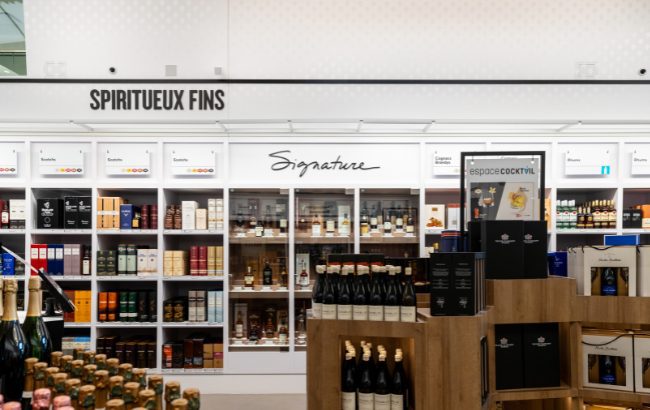Trade tensions reshape Canada’s spirits market
By Nicola CarruthersIn the wake of president Donald Trump’s tariffs, Canadians have turned their backs on US spirits, opting for homegrown brands.

When Canadian liquor stores pulled American spirits off their shelves this year in retaliation against US tariffs, the fallout was significant. US spirits sales in Canada plunged by more than 60% in just weeks, leaving gaps on shelves and forcing consumers to reach for Canadian alternatives. What started as retribution against the US now threatens to reshape drinking habits in one of the US’s biggest export markets. But is this a temporary disruption, or the start of a longer‐term loyalty shift?
Since March, provinces – including Ontario and Quebec – have pulled American alcohol from their government‐controlled stores, retaliating against a 25% tariff imposed by US president Donald Trump on 4 March. Canada moved to quickly impose its own 25% tariff on US goods.
While soon after Trump lifted tariffs on goods compliant with the US‐Mexico‐Canada agreement (USMCA), which included alcohol, in August further hikes on non‐compliant Canadian goods reignited tensions. At the time of writing, only Alberta and Saskatchewan had lifted their bans on selling American spirits in stores.
Canada is a hugely important market for US spirits. In 2024, Canada imported US$221 million worth of US spirits, making it the category’s second‐largest export market behind the EU.
Recent data illustrates the severity of the situation. From 5 March to the end of April, US spirits sales in Canada plummeted by 66.3%, while total spirits sales fell by 12.8%, according to Spirits Canada. Ontario, the country’s largest spirits market, saw US spirits sales plunge by 80%. Recent calculations from the Distilled Spirits Council of the US (Discus) showed US spirits exports to Canada were worth US$2.9m in May this year (a stark contrast to US$22m in May 2024), while in June they rose slightly to US$3.9m.
Trade groups Discus and Spirits Canada are working hard to encourage both governments to return to tariff‐free trade and reaffirm the USMCA trade deal. Chris Swonger, president and CEO of Discus, warned the exclusion of US spirits could cost Canadian provinces CA$500m (US$361.5m) in lost tax revenue.
While the removal has undoubtedly affected consumer choice, it has also given a boost to other categories, with Canadian whisky benefitting the most. Data from NIQ’s On‐Premise Measurement tool for the 12 weeks ending 12 July showed locally made whisky had a higher share of volume and value sales of the total whisky category than American whiskey in the Canadian on‐trade.
In terms of volume, Canadian whisky held a 40% share of total whisky, versus 25% for American whiskey. By value, Canadian whisky had a 35% share, and American whiskey took a 25% share. Over the 12 weeks, Canadian whisky sales rose by 5% in value year on year, while American whiskey plunged by a third.
Canadian whisky brands
This is backed by the Liquor Control Board of Ontario (LCBO), which noted: “We are seeing customers trade up to super‐premium and deluxe Canadian whisky brands that are in line with American whiskey pricing.”
The LCBO previously listed more than 3,600 alcoholic products from the US, and confirmed they remain unavailable for sale. The LCBO recently noted that Ontario-made spirits saw a sales boost of 4.5% between 9 February and 6 September 2025, compared to the same period last year. It also noted an increase of 13% for Alberta-made spirits.
The absence of American alcohol seems to have had little impact on LCBO’s sales, however, with drinkers simply switching to non‐American alternatives or exploring other categories.
In its first‐quarter (Q1) update (1 April to 20 June), the LCBO’s total sales hit US$1.67 billion, similar to Q1 last year (US$1.66bn). Comparing LCBO’s top 10 spirits brands for Q1 this year with Q1 last year, only Texan brand Tito’s Handmade Vodka was absent, with Pernod Ricard‐owned Jameson Irish whiskey entering the ranks. Pernod Ricard’s Canadian affiliate, Corby Spirit and Wine, was able to take advantage of the situation. For its fourth quarter (April to June), Corby’s over‐the‐counter spirits sales grew by 4%, led by a push to increase shelf presence.
The impact of Canada’s boycott has been huge for Brown‐Forman, the US firm behind American whiskeys Jack Daniel’s and Woodford Reserve, which posted a 59% sales drop in Canada during Q1 (three months ending 31 July). In its Q1 earnings call CEO Lawson Whiting admitted the growth of its non‐US brands, such as Diplomático rum and El Jimador Tequila, wasn’t enough to offset the decline of its American brands. But the group “remained optimistic, based on recent developments related to tariffs under the US‐Mexico‐Canada trade agreement”.
In Québec, sales of Canadian spirits rose by 15% from 2 March to 16 August on the same period last year, according to the state‐owned Société des Alcools du Québec (SAQ). Canadian whisky grew by 35% in the past six months, while rum rose by 50% as sales moved from Bacardi to Captain Morgan.
Mitch Stefani, NIQ’s client solutions director, on‐premise, highlights that Alberta (which has a higher share of whisky sales than other provinces) has seen a pick‐up in American whiskey sales since they returned to shelves, but they remain “significantly below pre‐March levels”. For the 12 weeks to 12 July, value sales declines of American whiskey in Alberta were “roughly half” (down by 15.8%) the decrease seen in other provinces (down by 30%).
Further fuel was also added to the fire in Ontario. Premier Doug Ford urged consumers to drink whisky made in the province after Diageo announced plans to close a Crown Royal bottling plant in Amherstburg, Ontario, threatening approximately 200 jobs. Diageo confirmed it planned to shift some of the brand’s bottling to multiple sites in the US. While the LCBO told The Spirits Business Crown Royal would continue to be sold in its stores, Ford’s vocal criticism of Diageo may have swayed locals to avoid the brand.

Word of mouth
Any locality trend in Canada prior to the country’s tariff dispute with the US has evidently been accelerated. According to an NIQ On‐Premise Impact Report in June, 37% of consumers said they had tried a Canadian drinks brand in the past month that they hadn’t tried before. The top reason was to support local, followed by trying something new, and word of mouth.
Whether these trends represent a long‐term shift in spirits consumption among Canadians remains up in the air, industry experts believe. At SAQ, spirits category director Simon Bourbeau, says: “I don’t see any big movement in the long term; maybe the whisky category will be impacted because people have discovered Canadian whisky and more Scotch.”
Spirits Canada’s president and CEO, Cal Bricker, points out that local consumers will still seek out spirits that can’t be made in their country. “There is a strong demand for Bourbon in Ontario,” he says. “And it’s the same thing with Tequila. Those are trade‐protected terms. It’s not like we can create a Bourbon that’s domestically sourced and people are going to be satisfied with that. My expectation is that there may be a softening [in American spirits sales]; whether it’s long term, I guess we’re going to find out.”
However, Stefani feels the local‐first mindset could be here to stay: “Consumers are continuing to acknowledge supporting local, and I don’t think that’s going away anytime soon.”
Related news
Highclere Castle Gin lands in Canada
